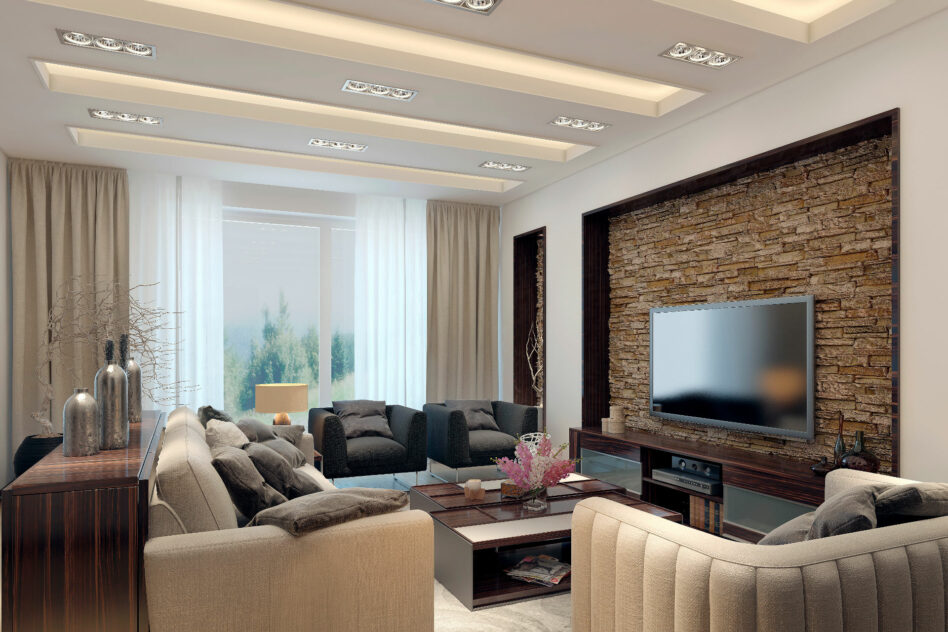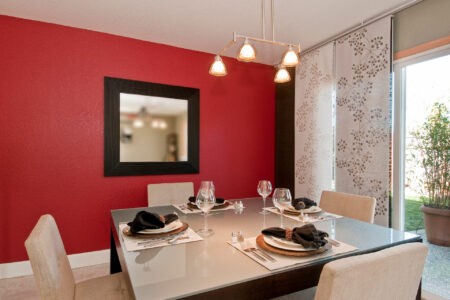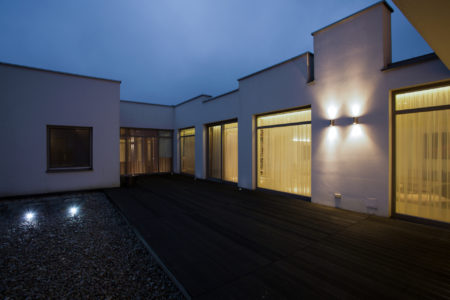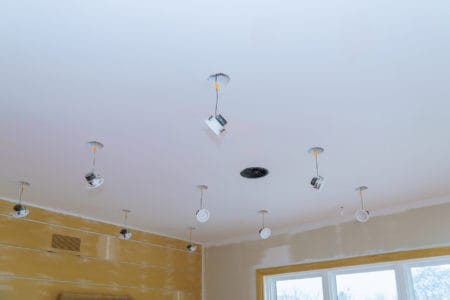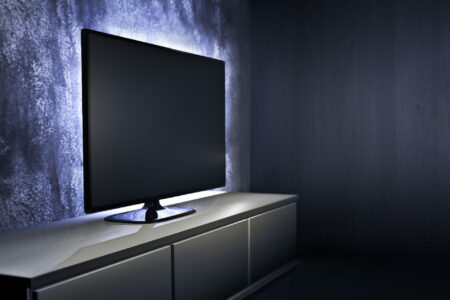Recessed lights’ ambiance has brought many homes pleasant illumination, and they have exponentially grown in popularity. These gorgeous lights require you to make space for them to settle in, so here are a few things you need to pay attention to when designing your recessed lights.
You’ll Need To Make A Hole
The challenging part of recessed lighting is that they sit within a crevice to be discreet. You will need to make a hole where you choose to place your recessed lights. Installing them on your own will take some skill, so it would be best to have a professional install your recessed lighting. This will prevent any unsightly holes in your roof or wall.
The material of the recessed lighting placement plays a significant role in whether you can place them there. Ceilings are usually hollow, so they won’t cause much hassle, but if your desired location is made of thick bricks and concrete, you should skip that option to avoid significant damage. Recessed lights require at least between 3 and 6 inches of depth.
Keep Light Size In Mind
The many variances in the size of recessed lights influence how much light it gives off, affecting the focal point’s harshness and illumination area. You also get different shapes of recessed lights, such as rectangular ones, but the most common types are round. The standard light size is 3 and 5 inches, but it can be as little as 2 inches.
If you prefer a smaller aperture, you will likely require more lights for proper illumination. The smaller it is, the less area it will cover, and it will emit more harshness and focus. A small, focused light would be best if you’re using a recessed light to focus on something like artwork.
The Height Of Your Roof Matters
If you’re planning on ceiling lights, recessed lights usually illuminate 30 inches below the source, so a single light will provide less illumination if you have a tall ceiling. A good rule of thumb for proper room illumination is to have half the space between lights as the height of your roof. For example, you’ll need lights 4 feet apart if your room is 8 feet tall.
Where To Place Recessed Lights?
The length and width of your room play a significant role in the spacing and placement of your recessed lighting. All recessed lights should get evenly spaced. If you place your lights too close to the wall, it will cast shadows and make the room appear smaller, so a safe distance from the wall would be 2 feet.
For more precise spacing between lights, you’ll need to choose how many you’ll have in each row of the roof. Divide the room’s length by the number of lights per row lengthwise. Do the same for the width. If you intend to focus light on a feature or artwork, it should get placed between 1.5 feet and 3 feet away from the wall.
Calculate The Correct Wattage
For the best ambient lighting possible, having the correct light wattage is essential. To calculate the wattage, you must multiply the length of the room by the width and again by 1.5. This means if you have a 15 x 20 room, the formula will be 15 x 20 x 1.5 = 450 watts. You can then divide the watts by the number of lights, say 6, then you’ll need each bulb to be at least 75 watts.
Choose Your Power Supply
You can either connect your new recessed lights with an internal or external power supply. Internal power supply means that the newly installed lights have shared power with other lights or electrical components. External power means the lights are connected separately to other electrical parts.
An external power supply provides higher quality power and stable dimming – if you add dimmers. Remember that external power must connect in a series, a singular electrical path, to function correctly.
Bear Ceiling Insulation In Mind
Your recessed lights will have an insulation contact rating (IC) which tells you whether they can be in contact with your ceiling’s thermal insulation. IC-rated means thermal insulation is all good, whereas non-IC-rated should be at least 3 inches away from it.
Note The IP Rating
An IP rating is a two-digit number that shows how dust and water-resistant the light is. This rating is essential when installing recessed lights outside so that it doesn’t suffer any damage. For bathrooms, you’ll need an IPX4 rating.
Trim Choice
There are many trim choices available in recess lighting, so you’ll need to find one that matches your overall style and your required function, such as a reflective trim to emit brighter light or an eyeball trim for movability.
The main trim styles are:
- Open trim: You can’t see the fixture
- Baffle trim: The light recesses inside the fixture with ribbing to shape the light
- Reflector trim: has a reflective surface that reflects light
- Pinhole trim: Channels light to be harsher
- Eyeball trim: allows you to move the light in different directions
- Shower trim: covered by tempered glass for bathroom and outdoor lighting
- Wall wash trim: Has a shield that directs light in a particular direction
The Type Of Bulb
The bulb you choose will depend on your preferred lighting; it can emit a warm yellow or cool white light. Warm lights create a cohesive ambiance and are less harsh, while white lights promote focus and illuminate an area more. You’ll enjoy warm lights for living spaces and cool lights in bathrooms and studies.
LED light bulbs are the most common choice as they save energy, are the brightest, and have a longer life span. Other options include halogen, fluorescent, and incandescent bulbs. Halogen and incandescent lights are a bit softer on the eyes but cost the most to keep going.
Adding Dimmers
Dimmers are compatible with recessed lights and are a fantastic way to control the mood of your room. They are worthwhile installing if you are planning to add new lights. A great plus is that dimmed light uses less energy.
